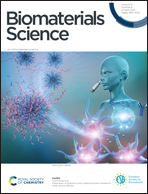Fluorescence thermometers: intermediation of fundamental temperature and light
Abstract
The rapid advancement of thermal materials and fluorescence spectroscopy has extensively promoted the development of micro-scale fluorescence thermometry in recent years. Based on their advantages of fast response, high sensitivity, simple operation, high spatial resolution, and non-destructive detection, fluorescence thermometers have become powerful analysis tools used to sense temperature fluctuations through fluorescent signals, especially to accurately capture living cells via fluorescent signals and local temperature variations in living bodies, thus providing the most direct means for the in-depth understanding of biological processes in cells. Herein, we systematically categorize the currently reported fluorescence thermometers based on the aspects of fluorescence intensity and wavelength, reveal the intrinsic relationship between fluorescence (intensity and wavelength) and temperature response, expound the applications of fluorescence thermometers in the fields of chemical sensing and biomedicine, and analyze the challenges faced by current fluorescence thermometers based on fundamental problems and practical applications simultaneously, thus highlighting the future directions of fluorescence thermometers.



 Please wait while we load your content...
Please wait while we load your content...